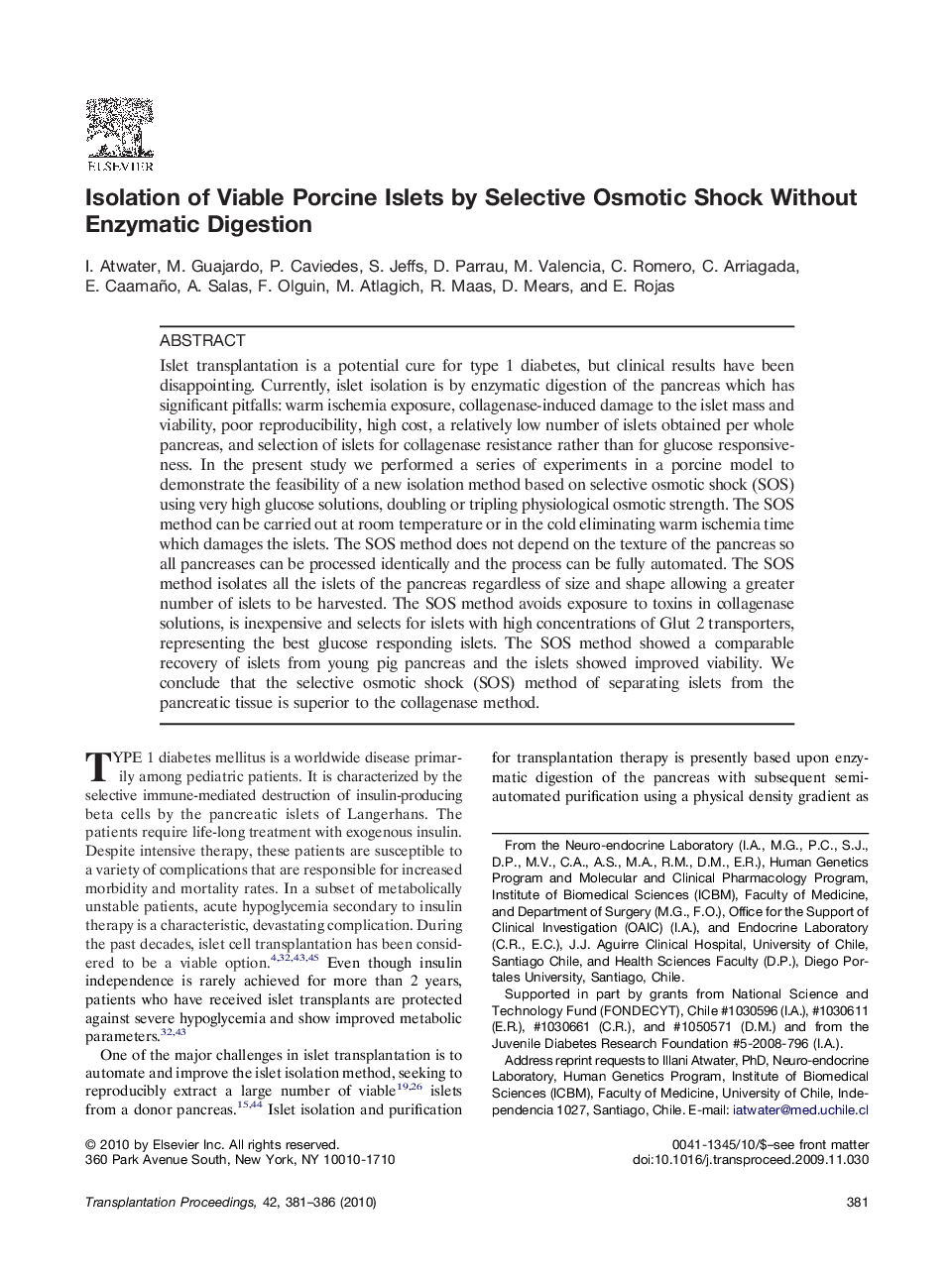| Article ID | Journal | Published Year | Pages | File Type |
|---|---|---|---|---|
| 4260893 | Transplantation Proceedings | 2010 | 6 Pages |
Islet transplantation is a potential cure for type 1 diabetes, but clinical results have been disappointing. Currently, islet isolation is by enzymatic digestion of the pancreas which has significant pitfalls: warm ischemia exposure, collagenase-induced damage to the islet mass and viability, poor reproducibility, high cost, a relatively low number of islets obtained per whole pancreas, and selection of islets for collagenase resistance rather than for glucose responsiveness. In the present study we performed a series of experiments in a porcine model to demonstrate the feasibility of a new isolation method based on selective osmotic shock (SOS) using very high glucose solutions, doubling or tripling physiological osmotic strength. The SOS method can be carried out at room temperature or in the cold eliminating warm ischemia time which damages the islets. The SOS method does not depend on the texture of the pancreas so all pancreases can be processed identically and the process can be fully automated. The SOS method isolates all the islets of the pancreas regardless of size and shape allowing a greater number of islets to be harvested. The SOS method avoids exposure to toxins in collagenase solutions, is inexpensive and selects for islets with high concentrations of Glut 2 transporters, representing the best glucose responding islets. The SOS method showed a comparable recovery of islets from young pig pancreas and the islets showed improved viability. We conclude that the selective osmotic shock (SOS) method of separating islets from the pancreatic tissue is superior to the collagenase method.
